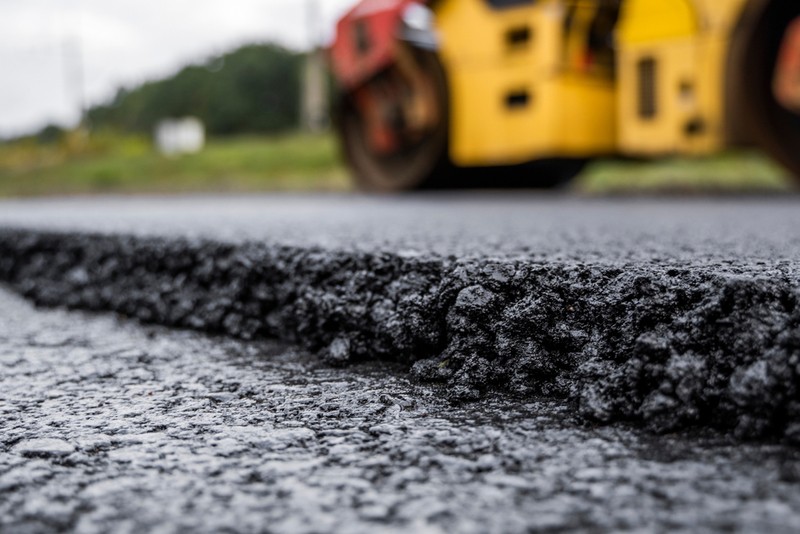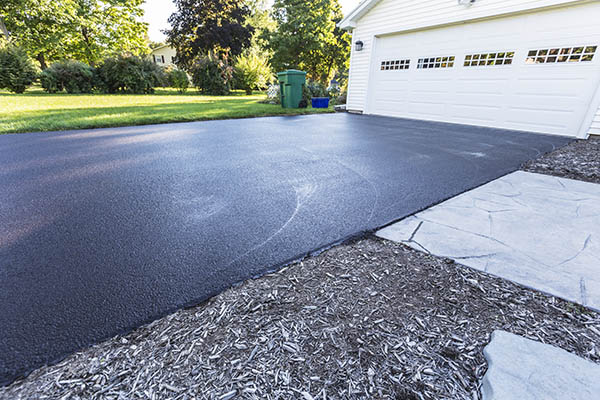Elevate Safety and Appeal: Angled Car Park Solutions with Asphalt Sealing
Elevate Safety and Appeal: Angled Car Park Solutions with Asphalt Sealing
Blog Article
Warm Mix Asphalt: A Lasting Remedy for Sidewalk
Hot Mix Asphalt (HMA) has actually emerged as a leading lasting option for pavement remedies, supplying a myriad of innovative technologies and ecological benefits. As the need for environment-friendly construction practices expands, exploring the nuances of HMA's sustainability can supply valuable understandings right into the future of sidewalk remedies.
Environmental Benefits of Warm Mix Asphalt

Additionally, Hot Mix Asphalt aids to mitigate urban warmth island effects. Its dark color soaks up sunshine, reducing the amount of warmth reflected back right into the atmosphere contrasted to lighter-colored pavements. This can reduce ambient temperatures in city areas, reducing the need for cooling and ultimately minimizing power consumption.
In enhancement, Hot Mix Asphalt contributes to enhanced stormwater administration. Its porous nature enables water to infiltrate the sidewalk and recharge groundwater products, decreasing drainage and the danger of flooding. These ecological benefits make Hot Mix Asphalt a sustainable choice for leading roads and highways.
Energy Efficiency in HMA Manufacturing
Is power performance a vital variable in the manufacturing of Hot Mix Asphalt (HMA)? Definitely. Power plays a significant role in the manufacturing of HMA, impacting both expense and environmental sustainability. One essential element of energy efficiency in HMA production is making use of warm mix asphalt (WMA) modern technologies (commercial parking lot paving). WMA enables the blending and placement of asphalt at lower temperatures contrasted to traditional hot mix asphalt, leading to reduced power intake throughout production. This procedure not just decreases fuel usage yet likewise reduces greenhouse gas emissions, making it a more eco pleasant choice.
In addition, developments in plant modern technologies have led to more energy-efficient HMA manufacturing processes. By enhancing power use in HMA production, the market can lower its carbon footprint while preserving high-grade pavement products.
Recyclability of Warm Mix Asphalt
The recyclability of Hot Mix Asphalt (HMA) is a pivotal element of its sustainability and lasting ecological effect. HMA is one of one of the most recycled products in the USA, with over 100 million lots of reclaimed asphalt sidewalk (RAP) being reused each year in new pavement building. Reusing HMA supplies numerous environmental advantages, such as reducing the requirement for virgin materials, decreasing power usage during production, and reducing the quantity of waste sent out to land fills.
The procedure of recycling HMA involves grating the existing sidewalk, squashing it right into smaller sized items, and blending it with brand-new accumulation and asphalt binder to produce a recycled mix. This recycled mix can usually perform as well as or even much better than conventional HMA, while calling for less raw materials and producing reduced greenhouse gas emissions. By incorporating RAP right into new sidewalk jobs, road firms can preserve natural sources, lower prices, and decrease the environmental impact of road building and construction and upkeep activities. In general, the recyclability of HMA plays a considerable role in promoting sustainable practices within the sidewalk market.

Long-Term Efficiency of HMA
Asphalt sidewalks see this here show sturdiness and durability over an extended duration, reflecting the lasting performance of Hot Mix Asphalt (HMA) In addition, innovations in HMA innovation, such as the usage of polymer-modified binders and warm mix asphalt, have actually even more boosted the sturdiness and long life of HMA sidewalks. By focusing on quality building and upkeep practices, HMA proceeds to prove itself as a economical and lasting option for long-lasting pavement infrastructure.

HMA: Resilience and Sustainability
Showing both toughness and sustainability, Warm Mix Asphalt (HMA) has come to be a foundation in the construction of durable pavement infrastructures - angled parking. HMA's durability comes from its ability to stand up to hefty loads, harsh climate condition, and high web traffic volumes, making it a trustworthy choice for streets, freeways, and airport runways. The make-up of HMA, which generally includes accumulations, binder, and filler, plays a critical duty in boosting its longevity and resistance to tear and put on
Furthermore, HMA's sustainability depends on its recyclability and energy-efficient manufacturing process. The ability to recycle reclaimed asphalt sidewalk (RAP) in brand-new HMA combinations decreases the need for virgin products and lessens the ecological effect of pavement building and upkeep. Additionally, the energy effectiveness of creating HMA depends on its reduced blending temperatures contrasted to other pavement materials, resulting in minimized energy intake and greenhouse gas discharges.
Conclusion
Finally, warm mix asphalt (HMA) uses a lasting solution for sidewalk with its eco-friendly qualities. HMA's recyclability, energy efficiency in production, and lasting sturdiness make it an environmentally friendly choice for roadway building. By saving natural resources, lowering waste, and reducing greenhouse gas exhausts, HMA plays an important duty in advertising sustainability in facilities advancement. Its ability to mitigate urban warmth island effects better highlights its importance in developing resilient and eco aware pavement systems.
HMA is one of the most recycled explanation products in the United States, with over 100 million loads of redeemed asphalt pavement (RAP) being recycled yearly in brand-new pavement building and construction.The process of reusing HMA includes milling the existing sidewalk, squashing it right into smaller sized items, and mixing it with brand-new aggregate and asphalt binder to create a recycled mix.Asphalt sidewalks show resilience and resilience over a prolonged period, mirroring the long-term efficiency of Hot Mix site here Asphalt (HMA) Additionally, innovations in HMA technology, such as the usage of polymer-modified binders and cozy mix asphalt, have additionally enhanced the sturdiness and long life of HMA pavements. The capability to recycle reclaimed asphalt sidewalk (RAP) in brand-new HMA mixtures reduces the need for virgin products and minimizes the ecological influence of pavement building and upkeep.
Report this page